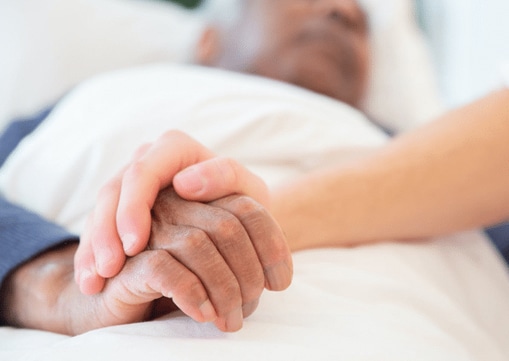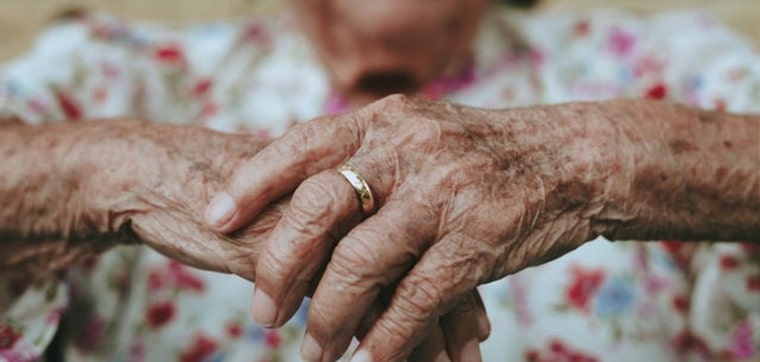Bedsores in Nursing Homes
Bedsores, also known as pressure ulcers or pressure injuries, are open sores that can vary in severity. They may impact only the epidermis (the outer layer of the skin) or may reach down to the fat, muscles, and bones beneath. The disintegration of skin and tissues is caused by consistent pressure or shear, typically due to inadequate care and cleanliness. Bedsores in nursing homes are a significant concern as they often result from neglect.

Home ▸ Bedsores
If left untreated, bedsores can cause serious complications, including skin, joint, and bone infections and even life-threatening conditions such as sepsis (an infection in the bloodstream). It is important that patients or residents who have mobility issues are properly positioned, rotated regularly, and provided with proper hygiene, nutrition, hydration, and treatments for underlying diseases or disorders. Bedsores are an indication of which type of abuse is occurring, often highlighting neglect in these settings.

How do bedsores develop?
According to John Hopkins Medicine, bedsores occur when individuals are unable to move or have not been moved, if immobile, for long periods of time. As the individual is placed in a static position and pressure and weight are exerted onto key parts of the body, blood will decrease or cease to flow to those areas, killing cells and breaking down the skin. Alternatively, the individual may be positioned improperly, which leads to the skin pulling or rubbing to the point of injury. A lack of airflow and hygiene further accelerates tissue death and increases the risk of infection.
Bedsores can develop quickly—studies completed by the Agency for Healthcare Research and Quality indicate that they commonly occur within one week of being admitted to a hospital or within four weeks of being admitted to a long-term care home. Typical individuals in which bedsores develop include unconscious, injured, physically and mentally disabled or disordered, or elderly patients.
The individual may be bedridden, in a wheelchair, or in a cast. Under these circumstances, they rely heavily upon a caregiver or nurse to provide routine care. However, due to lack of staff, insufficient training, abuse, or neglect, the patient may not receive the necessary preventative care and treatment.
Etiology of Bedsores
It is beneficial to know the precise causes of bedsores in order to understand how nursing homes and hospitals may overlook their patients’ needs. In general, immobile patients must be rotated and repositioned on a regular basis to avoid pain, pressure, improper placement, and the various consequences that arise from these issues. According to the Agency for Healthcare Research and Quality, if these requirements are neglected, bedsores can begin to develop in 2 to 6 hours depending on the health of the patient.
As stated by the Indian Journal of Plastic Surgery, the causes of bedsores involve three main extrinsic factors: pressure, shear, and friction.
Pressure
Shear
Friction
Bedsores Risk Factors
According to the Permanent Journal, along with extrinsic factors that increase the risk of developing bedsores, there are intrinsic risk factors that include age, immobility, incontinence and moisture, lack of sensory perception, malnutrition and dehydration, and certain medical conditions. When a patient is admitted to a hospital or residence home, the presence of these factors should be documented. The staff will then be responsible for attending to the corresponding needs. A patient who is at higher risk of developing bedsores in nursing homes should receive adequate care to prevent them.

Age
Age plays a significant role in the development of bedsores. People above 60 years of age, account for about two-thirds of bedsore cases. As the skin loses elasticity and weakens with age, it is more prone to the development of bedsores.

Immobility

Incontinence or Moisture

Lack of Sensory Perception

Malnutrition and Dehydration
Malnutrition, and associated conditions such as anemia, can thwart healing or the ability of the body to fend off infections. Furthermore, as surmised by the U.S. National Library of Medicine, high rates of dehydration in nursing homes may correlate with the pervasiveness of bedsores because it affects blood volume and blood-oxygen levels.
Medical Conditions
Health conditions that affect blood supply and blood vessels, such as type-2 diabetes or vascular disorders, can increase the chances of bedsores because circulation is not optimal. According to the Indian Journal of Plastic Surgery, specific mental health conditions can also increase the risk of bedsores if they affect communication, hygiene, and nutrition.
Common Sites for Bedsores
Most pressure ulcers occur in areas on the body where there are bone prominences. In fact, the Journal of Postgraduate Medicine Education and Research reports that 80% of bedsores arise at the heels, ankles, spine, tailbone, hips, pelvis, femur, and buttocks. The Institute for Quality and Efficiency in Health Care notes that if an individual is in a wheelchair, the most commonly affected areas may be the shoulder blades, tailbone, hips, buttocks, and heels. If they are lying down, their elbows, back of the head, and ears may also be risk zones.

Symptoms of Bedsores
Model Systems Knowledge Translation Center discloses that there are key warning signals that a bedsore is developing. As discussed, it may not be obvious to the patient as they may have a decreased or lack of sensory awareness; however, it should be clear to a medical professional when they are checking the status of a patient or resident. When a bedsore is initially developing, within the first few hours, a discolored or dark appearance to an area of the skin is typically present. It is indicative of pressure and poor blood circulation to the site. It may also feel hard and warm to the touch. At this point, the patient should be rotated into a different position or provided with pressure relief in some fashion. If the discoloration does not return to normal, a pressure ulcer has begun, and the site should be monitored and treated. For advanced bedsores, additional symptoms may include swelling, an open wound, or pus drainage, indicating a need for medical intervention and treatment.
Stages of Bedsores
Under medical circumstances, according to the Permanent Journal, i pressure bedsores are traditionally classified into four stages as follows:
Stage 1
At the primary stage of bedsore formation, the area will be dark red or purple and be tender and warm to the touch. The patient may feel burning, itching, or pain. There will be no indication of an open sore.
Stage 2
If a bedsore has progressed to the secondary stage, it may now appear as a shallow open scrape or sore. There will be damage to the skin, and it may be increasingly painful.
Stage 3
At the third stage, a bedsore has advanced considerably, reaching through the epidermis and the dermis layers of the skin, creating a crater-like appearance.
Stage 4
At stage four, a bedsore has become a severe, large wound through all of the layers of the skin. Muscles, tendons, and bones may be visible. Infections are a serious risk.
Treating Bedsores
There are various treatments available for bedsores. It is advantageous to recognize and intervene with bedsores at an early stage because advanced stages of bedsores carry a heightened risk for complications, require extensive treatment, and demand a lengthy healing period. Treating bed sores in nursing home patients effectively requires timely medical intervention.
1. Cleaning and Dressing
The wound must be thoroughly cleaned and dressed. In the event that removing contaminated and dead tissues is necessary, medical professionals or surgeons can use surgical, mechanical, enzymatic, or biological debridement. After the wound has been cleaned, a dressing will be applied in order to protect the wound and promote proper healing.
2. Antibiotics
Antibiotics should be prescribed to a patient if the wound was infected. It must be accompanied by medical intervention to remove contaminated and dead tissues surrounding the wound.
3. Negative Pressure Wound Therapy
In order to promote deep wound healing, negative pressure wound therapy can be applied to the area. It is particularly advantageous for pressure ulcers that have reached stage 4 in severity or for bedsores that have become infected. It involves a suction pump and a vacuum-assisted closure in order to draw fluid from a wound.
4. Skin Grafting
As John Hopkins Medicine states, if the bedsore is considerably large, a surgeon can remove healthy skin from an area of the body and transplant it to the wound site in order to fill in the site and promote healing.
Bedsores Complications
When a bedsore has developed, especially past stage 1, it can take a considerable length of time to heal properly. The healing process depends on the health of the patient, any underlying health issues and how they have been managed, the severity of the bedsore, and if there were any complications resulting from the bedsore. If a pressure ulcer is not treated in a timely manner, there may be serious health consequences. Bedsores can lead to the following conditions:
- cellulitis (skin infection)
- septic arthritis (joint infection)
- periostitis (infection of the layer over the bone)
- osteomyelitis (swelling and inflammation of the bone)
- sepsis (blood infection)
- cancer
Many of these conditions can be life-threatening, demonstrating the importance of preventative care and recognizing the signs of stage 1 or stage 2 pressure ulcers.
Are Bedsores Preventable?
Based on observations made by Elizabeth A. Ayello PHD, bedsores can be largely prevented with attentive care to the patient, observation of the patient’s body and behavior, and communication with medical professionals. In a nursing home setting, nurses are the primary caregivers who observe, monitor, care for, and treat patients. It is important that patients are provided with routine repositioning, adequate nutrition and hydration, sufficient cleanliness and skincare, and accurate treatment and management of underlying health issues.
Any neglect to these duties could result in serious and severe health consequences for patients, including the development of bedsores. There is significant reason to believe that the high number of bedsore incidents in nursing homes is due to nursing home neglect or abuse. As such, nursing homes that were complicit in you or your loved one developing bedsores should be investigated and held accountable for their actions or inactions.
If you suspect that nursing home neglect led to or worsened a case of bedsores, contact a nursing home lawyer today to receive assistance with this sensitive matter.

- Last Modified January 24, 2025
- Editorial Guidelines
Dr. Patricia Shelton, MD

Education:
- University of Washington, Doctor of Medicine – MD. June 2008
- University of Washington, Bachelor of Science – BS, Jun 2003
Background:
Neuroscience and Medicine
Career:
- Dr. Shelton primarily writes content for health-related websites, but has also written test prep materials, white papers, published research articles, court documents, and more.
- Dr. Shelton teaches anatomy and physiology at the college level for the National Institutes of Health.
